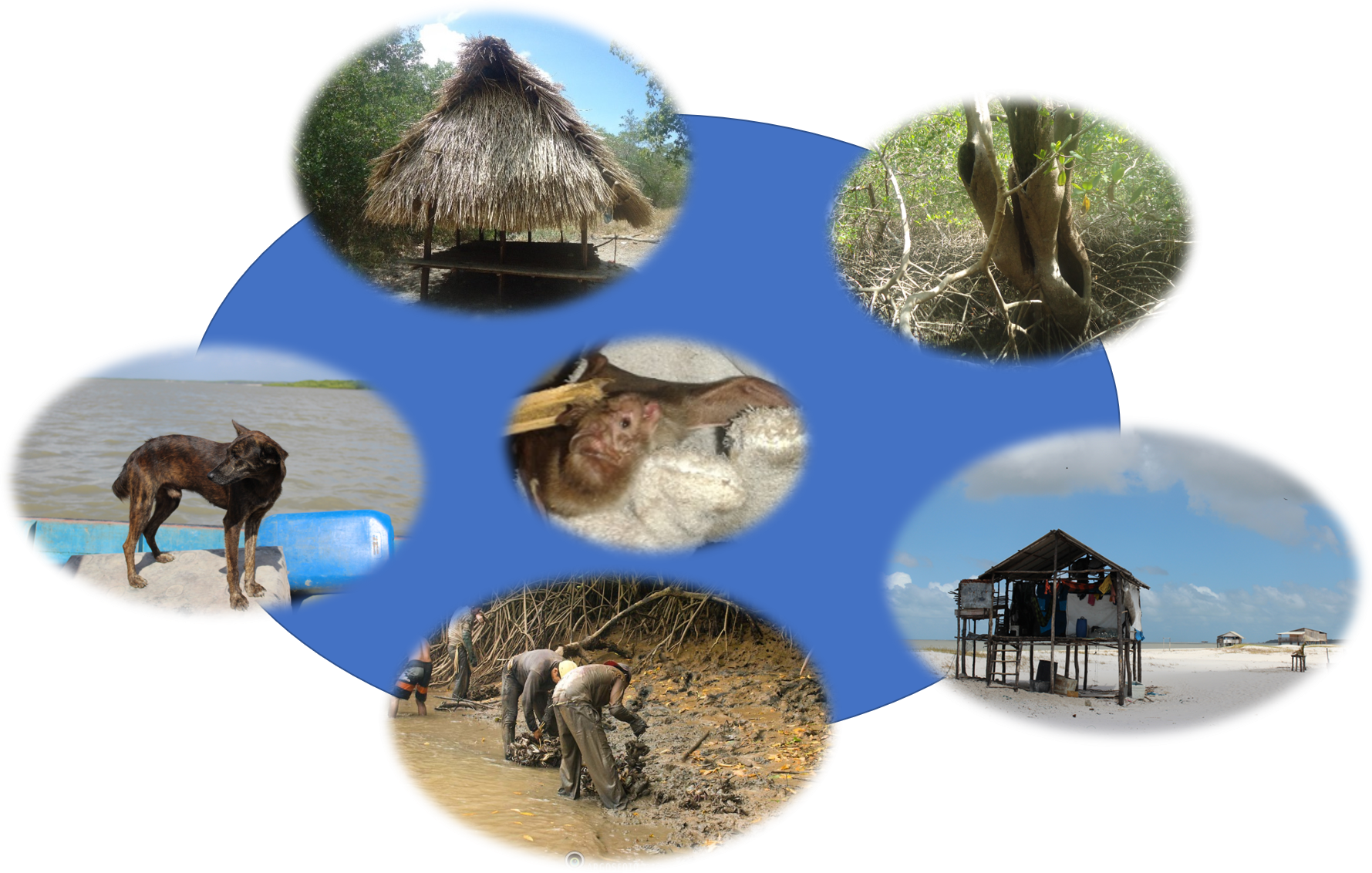About This Project
Aggression by vampire bats towards humans and domestic animals is frequent in mangroves in the Amazon region. Bats are sources of infection for several zoonotic microorganisms, including rabies virus. But why does this aggression occur? Is natural prey scarce, or is human presence altering bat feeding behavior? We will monitor bat behavior in human dwellings and mangroves, to learn more about how we can reduce bat aggression and prevent further disease transmission.
Ask the Scientists
Join The DiscussionWhat is the context of this research?
In recent years cases of human rabies transmitted by hematophagous bats have been reported in the Brazilian Amazon. This project will be developed in a mangrove located in a conservation area where reports of human and companion animal aggression by bats are common. To control bites and aggression from hematophagous bats, health surveillance suggests measures that are ineffective, especially in remote areas where the bat attacks usually occur. Informal reports from the riverside community point to a differentiated behavior of the hematophagous bat and to the killing of possible natural prey that could "hinder" the local crab fishing activities. We intend to describe the behavior of the hematophagous bat in the mangrove and to identify the main species from which it feeds.
What is the significance of this project?
Rabies transmitted by dogs is relatively well controlled in Brazil, but cases transmitted by wild animals, especially bats, is on the rise. Most of the recent human cases have been caused by the AgV3 variant of rabies, associated with hematophagous bats, even when a cat bite caused direct pathogen transmission. Curuçá's riverside population is frequently aggressed by bats, and may be at risk of developing rabies. Knowing the frequency and context of these incidents, as well as how bats have access to humans in these areas, will allow us to propose efficient forms of prevention for this economically and socially marginalized population. Additionally, more knowledge about the species from which these animals feed will guide public policies for conservation of biodiversity in this region.
What are the goals of the project?
We intend to describe the behavior of hematophagous bats in a mangrove environment and the environmental factors related to feeding in humans. Cameras trap will be arranged inside the residences and in the mangrove surrounding these residences.The aim will be to monitor host approach behavior, feeding time and frequency with which people and animals are attacked.
The project also intends to identify the species available for feeding bats in the mangrove, which will be achieved with the images obtained by the cameras arranged in the mangrove. As these locations are difficult to access, the resource will also be essential for boat rentals and guides, since most reports of aggression occur far from the city's headquarters, where access is only by boat.
Budget
This budget will help me gain access to the more remote parts of the mangrove, where bat attacks occur more frequently. We will use half of the value for the purchase of cameras trap and the rest will be employed in the expenses with displacement of the team and food. Access to these areas is only possible with vessels that require an experienced pilot. All services and food in this project will serve to foster local commerce.
Endorsed by
 Project Timeline
Project Timeline
Initial months will be dedicated to the purchase of material (import) and organization of field logistics. Fieldwork will take place from January to December 2020, with monthly trips, for 2 consecutive days (12 trips). Each month, using a boat, the team will identify a location where bat attacks have occurred recently and there, we will install the cameras that will be arranged for 30 days, inside and outside the residences. Image database will be analyzed during the study period.
Jun 03, 2019
Project Launched
Aug 01, 2019
Acquisition of Material required for field trips and logistics planning
Jan 25, 2020
Beginning of the fieldwork
Feb 26, 2020
Start of image analysis
Dec 30, 2020
Last fieldwork
Meet the Team
Affiliates
Affiliates
Isis Abel
I'm Carioca, a biologist from Federal Rural University of Rio de Janeiro (UFRRJ). My academic life led me to live in São Paulo, where I did a master's degree (São Paulo University), Seropédica (RJ), where I returned to do a doctorate (UFRRJ), Minas Gerais, where I lived and worked for University Center of Lavras for 12 years and Porto Alegre (Federal University of Rio Grande do Sul (UFGRS) where I did the postdoctoral, before finally arriving in Pará where I work as a Professor at the Federal University of Pará (UFPA), campus of Castanhal since 2012. At this university, I teach Biostatistics and Public Health to the Veterinary Medicine course. I also act in two postgraduate programs (PPG): the PPG Animal Health on Amazon and the PPG in Anthropic Studies on Amazon.
Since I started work at UFPA, I've been dedicating myself to multi and interdisciplinary projects that analyze the peculiarities of Amazon in the context of public health. Our projects developed in areas of forest fragmentation intend to evaluate the impact of fragmentation in the human and animal communities that live adjacent to these fragments, as well as the pathogens that may be transmitted between wild animals, domestic animals, and the man in these conditions.
Our investigations have also been concerned with the health of wild animals and man in many areas of mangrove that exist in Pará state. We have been investigating the real risk of develop rabies disease which these individuals are exposed and the appropriate ways to communicate the population to promote changes in habits and attitudes that are reflected in prevention. Leading this research group of 10 students (scientific, master's and doctoral initiation),for only 6 years, these investigations are beginning to generate publications of regional, national and international interest.
Elane de Araujo
I am a Veterinary Medicine graduate from the Federal University of Pará. I am currently a Master of the Postgraduate Program in Animal Health in the Amazon - Institute of Veterinary Medicine. I was a Scientific Initiation Scholar (PIBIC / CNPq) in the period 2013-2014, with the work on the characterization of rabies in livestock animals in Pará, and 2014-2015, with the work on the spatial analysis of rabies cases in the state of Pará between 2004-2013. I also participated in the Extension projects on Science Club in Rural Communities in 2015-2016 and 2016-2017. I have experience in epidemiology, working mainly on the following topics: rabies, spatial analysis and statistical analysis.
Additional Information

Project Backers
- 10Backers
- 11%Funded
- $417Total Donations
- $41.70Average Donation





